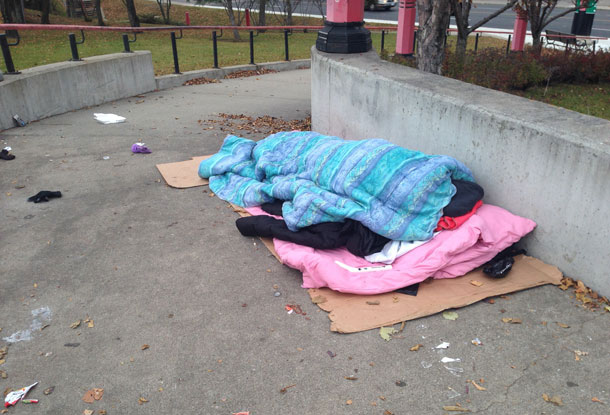

TORONTO – Ending homelessness is Ontario is the goal of the Wynne Government. Today Minister Deb Matthews announced a plan to end homelessness in Ontario in ten years.
“We are moving forward with a 10-year commitment to end chronic homelessness, and in doing so, advance Ontario’s goals under the Poverty Reduction Strategy. I want to thank the Expert Advisory Panel on Homelessness for their advice on this complex issue. As a province, we will continue to work with our partners to ensure that no one is left behind and that every Ontarian can achieve their full potential,” stated Deb Matthews, Deputy Premier, President of Treasury Board and Minister Responsible for the Poverty Reduction Strategy.
In Thunder Bay, Shelter House will be coming before City Council seeking additional funding to maintain operations. The homeless shelter is in the position of not having enough core funding to maintain operations through the fiscal year.
There are a number of homeless people in Thunder Bay, many have taken to living on the streets, parks or in the bushes inside the city.
Homelessness Strategy Background
On January 2015, Ontario established an Expert Advisory Panel on Homelessness to provide advice on how to achieve the goal of ending homelessness under the province’s Poverty Reduction Strategy.
The Panel’s report [PDF] acknowledges that homelessness is complex, and that progressive action is required to address it. In response, Ontario is committing to a number of immediate and long-term actions, including:
- setting a target to end chronic homelessness in 10 years
- providing up to $10 million over two years in targeted funding from the Local Poverty Reduction Fund to help prevent and end homelessness across the province
- adopting the recommended definition of homelessness, including chronic homelessness, to build common language and understanding about the problem
- planning to require enumeration at the local level to gather data about homelessness
- prioritizing provincial action to reduce homelessness in four areas: youth, Aboriginal, and chronic homelessness, as well as homelessness following transitions from provincially-funded institutions and service systems, such as jails and hospitals
Working towards the long-term goal of ending homelessness is part of the government’s economic plan for Ontario. The four-part plan is building Ontario up by investing in people’s talents and skills, building new public infrastructure like roads and transit, creating a dynamic, innovative environment where business thrives and building a secure savings plan.
Quick Facts
- In total, the Expert Advisory Panel heard from 40 key presenters representing 15 subpopulations (e.g., youth, LGBTTQ, Aboriginal peoples, seniors, women and families), including representatives from nine municipalities/regions: Hamilton, Cochrane, Durham Region, Peterborough, Thunder Bay, Waterloo, Toronto, London and Peel Region.
- The panel recommended that the province adopt the Federal Homelessness Partnering Strategy definition for chronic homelessness. Chronic homelessness is described as people who are currently homeless and have been homeless for six months or more in the past year.
- Ontario is currently updating its innovative Long-Term Affordable Housing Strategy to reflect lessons learned through this report, and to integrate new research on best practices related to housing and homelessness





